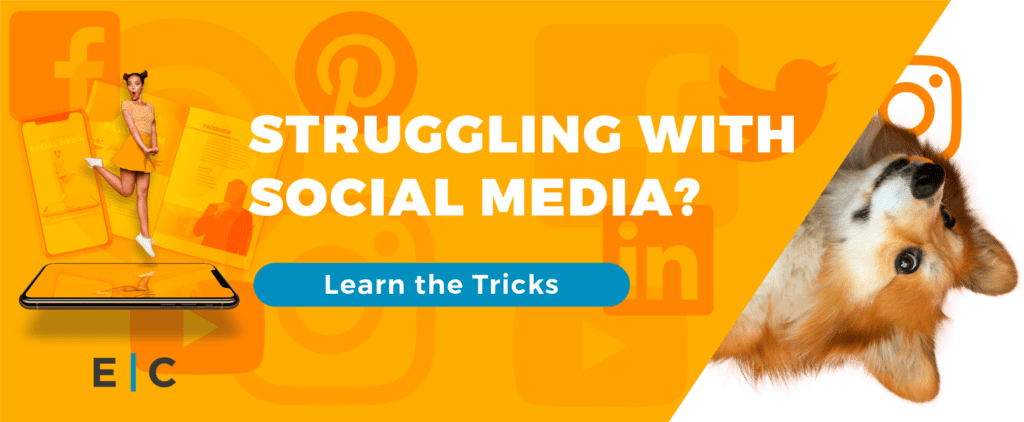If you’ve spent any significant amount of time with kids, you’ve probably had a moment where you noticed they have more to offer than just their shirt stains and uncovered sneezes: they have wisdom. We recently came to realize that they also can remind us of valuable marketing lessons. Here are some of our favorites:
Keep it Digestible
Kids aren’t known for their attention spans. Per year of a child’s age, the average attention span is 3 to 5 minutes for a single activity. They like their pages short and their gratification quick; they have places to be, things to explore, and are eager to move onto the next thing. In the age of smartphones, the rest of us are no better. (Ever get the urge to be on Facebook when you’re already on Facebook?)
Some scientists even say that goldfish can hold a thought for longer than us. All of this calls for content that is succinct, punchy, and easily skimmable.
Let your audience take in information in smaller chunks. Your blog posts can still even be long (posts of 3000+ word posts get more traffic), but make them easier to absorb with bullets, subheadings, and lists. When creating videos, don’t make your audience wait to be engaged. We’re now in an era where waiting for the “good part” of a three-minute video feels like work.
Go for the Gut
“Eat your vegetables. They’re good for you,” isn’t compelling for kids. As one marketer and dad discovered, kids would rather eat “pasta presents” than ravioli filled with “healthy spinach.” With visceral feelings being more important that reasoning, logic doesn’t matter much when children decide what they do or don’t want to play with, engage with, or eat.
But we’re different. Especially when we have a job to do.
We often want the facts, the features and benefits of a service or product, particularly when we’re making B2B decisions.
But what about when “the facts” don’t matter at all?
Advertising research has revealed that for commercials and print ads, emotion is more important than content. The most shared ad of 2015 and of all time was “Friends Furever” for Android—and it conveyed literally nothing about what their phones can do. Instead, the intention was to create an emotional response that’s associated with the brand. As Maya Angelou famously put it, “…people will forget what you said, people will forget what you did, but people will never forget how you made them feel.” The same goes for how brands market themselves.
Packaging Matters
At big box stores or grocery stores, it always goes the same way: kids want overpriced plastic $%^& or sugary cereal. Parents fight back, or they just cave.
But kids can’t help it.
They’re drawn to packaging that was created to capture their attention and don’t (or can’t) discern quality from what’s eye-catching or “seems” fun or tasty or entertaining.
Aren’t we all like that?
I was recently at Target with my boyfriend and saw that’d he’d put a pack of razors in the cart. He and I had recently agreed to be more conscious of spending, and I was surprised (a.k.a annoyed) that he’d decided to buy “fancy” razors. They seemed high-end, high-quality, and consequently, out of our budget. In reality, though, the price point was no different from more common brands with less sleek or luxurious packaging.
And the quality? His face looks the same.
Even though I spend my time around designers who work their magic on packaging every day, I found myself being just as influenced by design as the average consumer. Our actual designers experience this, too. In our blog from a few years back, one of our own described how Snapea Crisps’ new packaging not only caught her attention, but made her feel like the snacks inside were “healthier.” To assume that “responsible adults” look past package design in search of only the hard-and-fast benefits is completely wrong. Perception of value is powerful.
Tell a Story
As I mentioned earlier, kids are predominantly swayed by feelings, not facts. Similarly, they also love stories and are generally receptive to the narrative in anything. Envision’s Vice President, Steph Silver, has often told us how her 5 year-old son is thrilled to hear simple, meandering stories about a little boy who likes to play basketball.
In marketing, identifying “the story” (there always is one, despite what clients think) is worth the time.
Not only are stories more engaging to read and not only do they satisfy in the kid in us, but they also help us to humanize the brands with which we engage. Stories give actual arc to how they came to be and define who they are and and what they represent. Consider “About Us” pages, like the one we did here for a commercial construction company or this one for an emerging bespoke perfume brand.
Sometimes a brand’s story exists beyond a single, tangible, consumer-facing piece.
Intended to be primarily internal, the messaging platforms we create for our clients identify a brand’s purpose and both on practical level (proof points about what they offer) and in terms of who they are (the pillars that inform everything).
That a brand stands for “community, simplicity, and leisure” is part of its story. When we’re learning about new clients, we often have to dig deep for that “a-ha,” moment: the thing that transcends the list of products or services and gets at the reason an organization exists.
The “what” is easy. It’s the “why” that draws people in and builds affinity.
Make Them Laugh
Duh: kids love to laugh. I dare you to find a kids’ show that isn’t a little bit funny—or to make a poop joke to a kid and not have them instantly love you. And duh: everyone loves to laugh. Even the guy in a suit.
Too often, businesses—especially B2B businesses—think they have to be deadpan serious to be taken seriously.
One of our clients is an E.S.D. supplier. Pretty damn serious, right? While there isn’t a lot of low-hanging humor in E.S.D. supplies (nothing like there is with sausage), it’s important to remember that real human beings are still buying their products. In the spirit of giving them a break from straightforward information, we’ve been working on some industry-related jokes to bring life to their social media pages.
They key to using humor correctly is that it’s not self-indulgent: it’s not about what you would find funny, it’s about what the audience would find funny.
Don’t make Jay-Z references when you’re speaking to moms, and when you veer into edgy territory, carefully consider the potential consequences. Political humor? Avoid it altogether.
Be Familiar
SNL recently did a sketch where two competing ad agencies pitched concept for a new Cheetos commercial. One agency went for a heavy, heartbreaking, timely, and totally not-Cheetos-esque approach. The other agency pitched a classic Cheetos concept involving kids goofing around in the backseat and Chester Cheeto offering them some cheesy snacks. The Cheetos decision-makers were unamused with the latter.
What makes this sketch so brilliant is the absurdity of imagining Cheetos shocking its fans with something that feels completely off-brand—and utterly wrong for its audience.
Whether or not they could ever articulate it, kids are reassured by familiarity. Reliably, Fruit Loops commercials always feature Toucan Sam, and Hot Wheels branding always has the same colors and look. Aside from cases of much-needed rebrand, it’s what adult consumers ultimately want, too.
It’s hard to have brand affinity when the essence and aesthetic of the brand keeps changing. And it’s why you could be transported to any Target store in the country and be able to find your way around.
Give Them Someone to Be
Firefighters, magicians, scientists, chefs: kids love the opportunity to “be” someone else and imagine a new identity. It’s what all of us want, really. And it doesn’t have to go as far as wanting to be the sexy ladies in beer commercials or the slick guy in the Ferrari ad.
We want to be expert homemakers, office managers with finesse, and efficient workers. We want to be choosy moms who choose Jif and respected bosses who make smart business decisions. Good marketing offers something to embody, not just stuff to have.
An easy and emotional experience, a captivating look, a story, a laugh, a sense of familiarity, an opportunity to be a better version of ourselves or our role. What kids want is what we all want, and we should market accordingly.
Next up? What dogs can teach us about marketing metrics. (Maybe.)
-FINAL(01-00)-White&Blue-01.svg)





